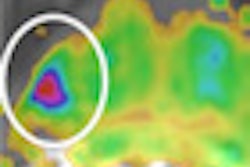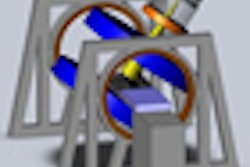Wednesday, November 28 | 11:40 a.m.-11:50 a.m. | SSK05-08 | Room E353C
Dutch researchers have found that repeat 3-tesla multiparametric (MP) MRI and MR-guided biopsy outperformed transrectal ultrasound (TRUS) biopsy in upgrading and upstaging patient risk restratification in the Prostate Cancer Research International: Active Surveillance (PRIAS) study at 12 months of follow-up.MP MRI and MR-guided biopsy had more biopsy upgrading (50%) and less biopsy upstaging (13%), compared with repeat transrectal ultrasound biopsy (38% upgrading and 50% upstaging, respectively).
"The ability of MR imaging to localize prostate cancers and to contribute in estimating prostate cancer risk makes this modality important for patients with presumed low-risk prostate cancer on active surveillance," said lead study author Dr. Caroline Hoeks from the department of radiology at Radboud University Nijmegen Medical Centre. "Results of our study show that MR-targeted biopsy is needed to gain further MRI experience in patients on active surveillance and to prevent false-positive MRI results."
In this study, 35 patients were included from four referral centers according to PRIAS criteria from 2009 until 2011. Nine patients were risk restratified and were recommended for radical treatment based on initial MP MRI and MR-guided biopsy at three-month follow-up.
The remaining 26 patients' results were compared at 12 months of follow-up for biopsy upgrading and biopsy upstaging. Five of the 26 patients did not undergo repeat examinations, leaving 21 individuals for the final analysis.
When MP MRI and MR-guided biopsy were repeated, eight of the remaining 21 patients were no longer eligible for active surveillance and were advised to receive radical treatment. MR-guided biopsy upgrading occurred in four of the eight subjects and transrectal ultrasound biopsy upgrading occurred in three.
MR-guided biopsy upstaging occurred in one of the eight subjects, while TRUS biopsy upstaging occurred in four. The other 13 patients remained on active surveillance.
"Upon application of MRI in active surveillance, acquisition of local MR-guided histopathology of an MRI-defined cancer-suspicious region is important, as MRI results may be false-positive," Hoeks added. "Combined multiparametric MRI and MR-guided biopsy may improve active surveillance patient selection by identifying patients with higher Gleason grade cancers, while simultaneously predicting true active surveillance suitable patients, based on a negative predictive value of a cancer-negative MR-guided biopsy specimen."



.fFmgij6Hin.png?auto=compress%2Cformat&fit=crop&h=100&q=70&w=100)




.fFmgij6Hin.png?auto=compress%2Cformat&fit=crop&h=167&q=70&w=250)











